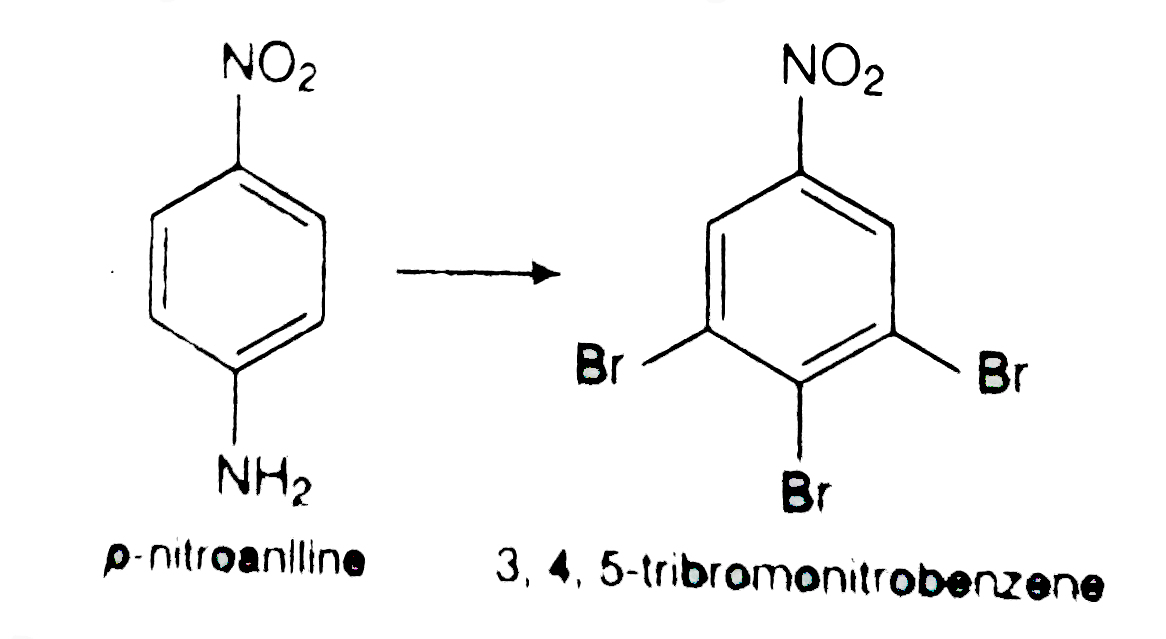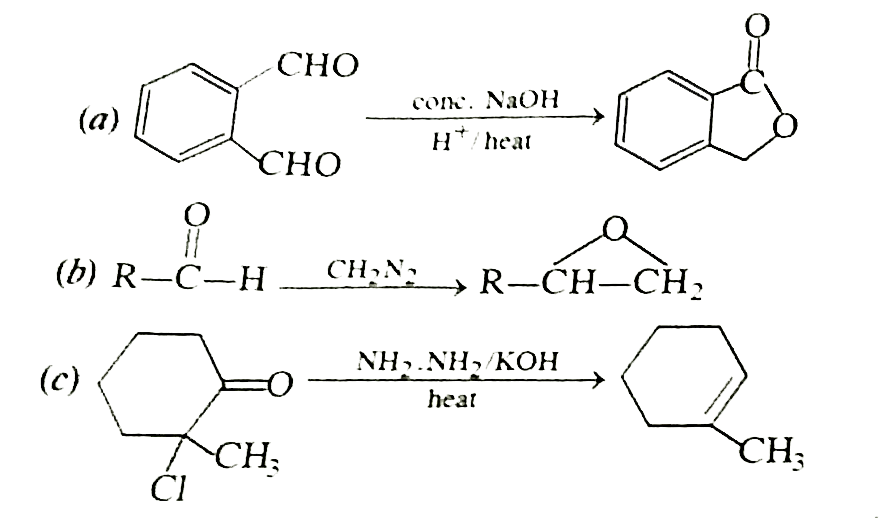How will you bring about the following conversions :
Acetic acid to glycine
To convert acetic acid (CH₃COOH) to glycine (NH₂CH₂COOH), we can use the Hall-Wollard-Zelinski (HVZ) reaction. Here’s a step-by-step breakdown of the process:
Step 1: Halogenation of Acetic Acid
1. Starting Material: Acetic acid (CH₃COOH).
2. Reagents: Halogen (chlorine, Cl₂) and red phosphorus (P).
3. Reaction: When acetic acid is treated with chlorine in the presence of red phosphorus, it undergoes halogenation at the alpha carbon (the carbon adjacent to the carboxyl group).
4. Product Formation: This results in the formation of chloroacetic acid (ClCH₂COOH).
Chemical Equation:
CH3COOH+Cl2P→ClCH2COOH
Step 2: Reaction with Ammonia
1. Starting Material: Chloroacetic acid (ClCH₂COOH).
2. Reagent: Excess ammonia (NH₃).
3. Reaction: Chloroacetic acid reacts with ammonia, where the chlorine atom is replaced by an amino group (NH₂).
4. Product Formation: This results in the formation of glycine (NH₂CH₂COOH).
Chemical Equation:
ClCH2COOH+NH3→NH2CH2COOH
Final Reaction Summary
The overall conversion can be summarized as:
CH3COOHCl2,P−−−→ClCH2COOHNH3−−→NH2CH2COOH
Conclusion
Thus, acetic acid can be converted to glycine through the HVZ reaction followed by nucleophilic substitution with ammonia.
---
1. Starting Material: Acetic acid (CH₃COOH).
2. Reagents: Halogen (chlorine, Cl₂) and red phosphorus (P).
3. Reaction: When acetic acid is treated with chlorine in the presence of red phosphorus, it undergoes halogenation at the alpha carbon (the carbon adjacent to the carboxyl group).
4. Product Formation: This results in the formation of chloroacetic acid (ClCH₂COOH).
CH3COOH+Cl2P→ClCH2COOH
1. Starting Material: Chloroacetic acid (ClCH₂COOH).
2. Reagent: Excess ammonia (NH₃).
3. Reaction: Chloroacetic acid reacts with ammonia, where the chlorine atom is replaced by an amino group (NH₂).
4. Product Formation: This results in the formation of glycine (NH₂CH₂COOH).
ClCH2COOH+NH3→NH2CH2COOH
The overall conversion can be summarized as:
CH3COOHCl2,P−−−→ClCH2COOHNH3−−→NH2CH2COOH
Thus, acetic acid can be converted to glycine through the HVZ reaction followed by nucleophilic substitution with ammonia.
Topper's Solved these Questions
- ALDEHYDES, KETONES AND CARBOXYLIC ACIDSBOOK - ICSECHAPTER - ALDEHYDES, KETONES AND CARBOXYLIC ACIDSEXERCISE - ISC EXAMINATION QUESTIONS (PART-II DESCRIPTIVE QUESTIONS) (CARBOXYLIC ACIDS)
99 Videos
- ALCOHOLS, PHENOLS AND ETHERS BOOK - ICSECHAPTER - ALCOHOLS, PHENOLS AND ETHERS EXERCISE - ISC EXAMINATION QUESTIONS
25 Videos
- APPENDIX II ( TYPICAL CONVERSIONS)BOOK - ICSECHAPTER - APPENDIX II ( TYPICAL CONVERSIONS)EXERCISE - AROMATIC CONVERSIONS
98 Videos
Similar Questions
How will you bring out the following conversion?

View SolutionHow will you bring about the following conversions :
Acetic acid to methylamine
View SolutionHow will you bring about the following conversions?
Acetic acid to ethane
View SolutionHow will you bring about the following changes :

View SolutionHow will you bring about the following conversions :
Propanoic acid to lactic acid
View SolutionBring about the following conversions :
Acetic acid to zinc acetate
View SolutionHow will you bring about the following conversions :
Ethanoic acid to propanoic acid
View SolutionHow will you bring about the following conversions ?
(i) Benzoic acid to Benzaldehyde
(ii) Benzene to m-Nitroacetophenone
(iii) Ethanol to 3-Hydroxybutanal.
View SolutionHow will you bring about the following conversions :
Acetylene to acetic acid
View SolutionHow will you bring about the following conversions?
Propanoic acid to acetic acid
View Solution
